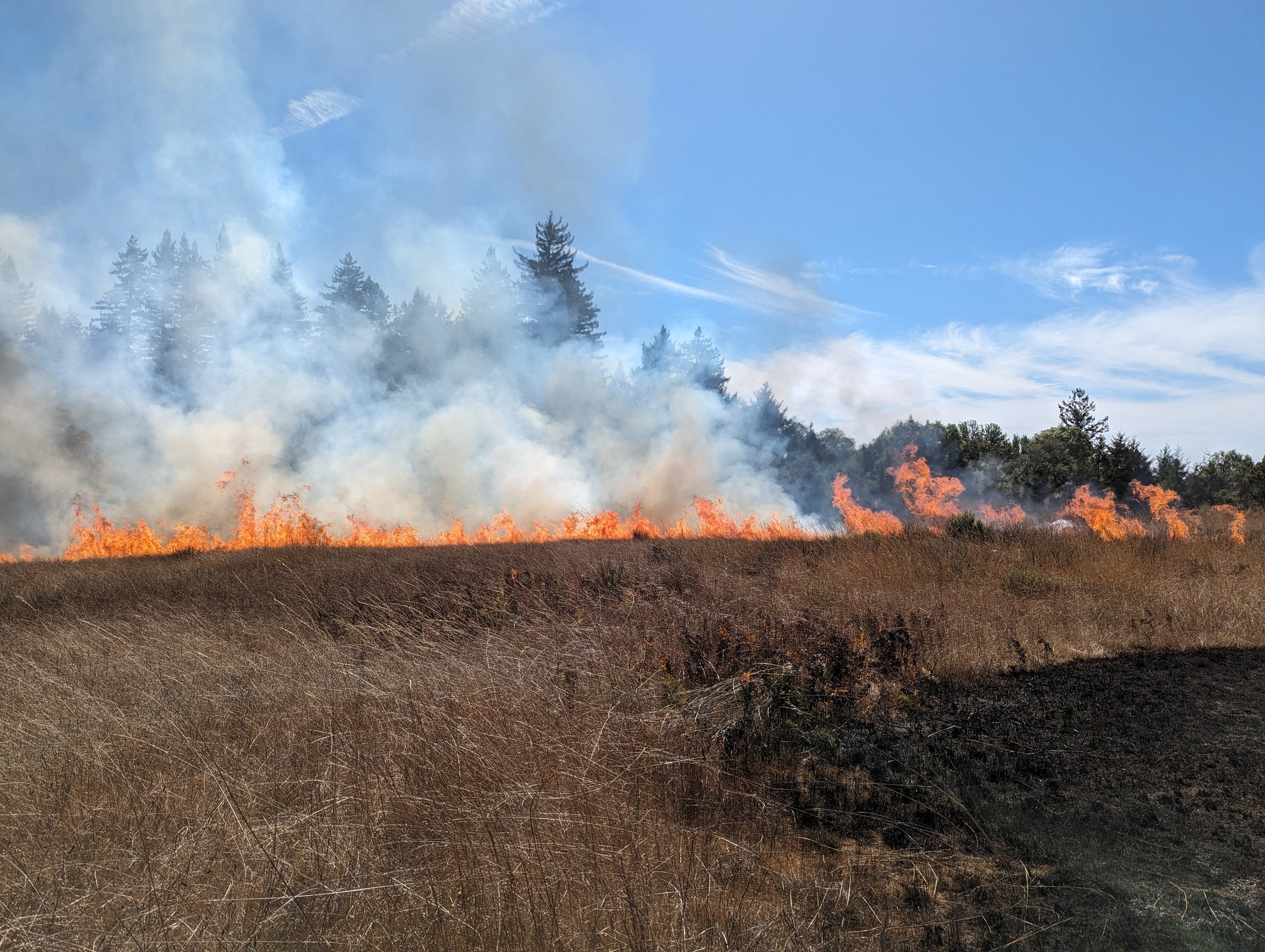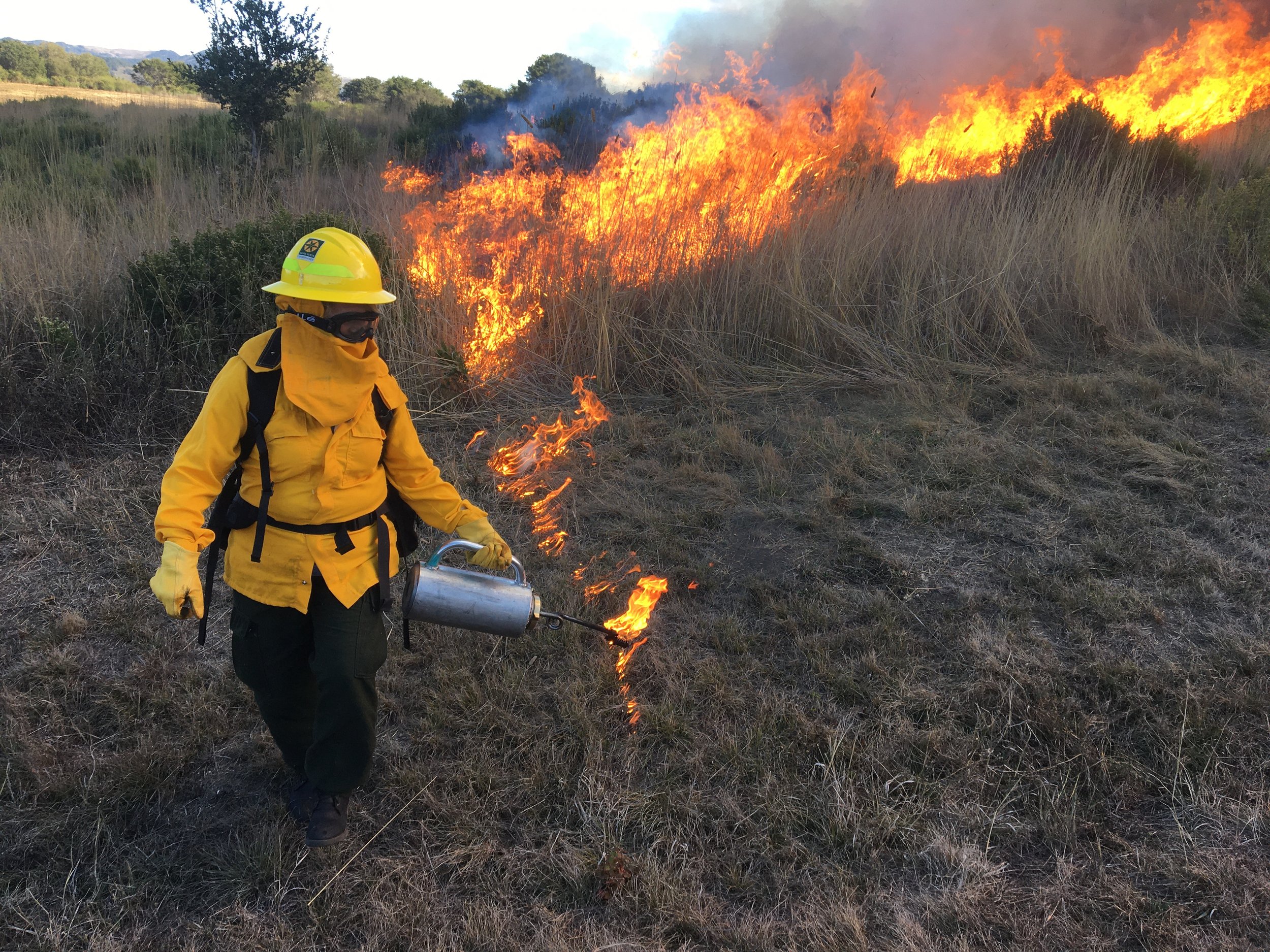
Why Use Prescribed Fire?
Whatever you call it - controlled burning, prescribed fire, cultural fire, or good fire - the intentional use of fire is safe and provides numerous benefits
(By the Central Coast PBA)
North America was and is a continent shaped by fire. The land evolved with lightning-caused fire for eons and 15,000+ years of frequent Native American cultural burning. Indigenous Tribes burned, and still burn, for many reasons including basketry materials, ceremony garments, healthy wildlife, clear pathways, fresh berries and bug-free acorns. These frequent, low intensity fires sculpted the bountiful "wilderness" colonizers first experienced and that we now know today. As the historic book "Forgotten Fires" outlines, North America burned at a low intensity more often and completely than we can possibly imagine in our limited fire-drought awareness.
Fire renews the land like water cleanses the body. Appropriately timed burning is an act of ecological restoration for native plants and wildlife (with exceptions, like some desert ecologies). This restoration adds nutrients, stimulates fresh growth, encourages rare blooms and makes room for seedlings. Many plant communities need good fire to persist.
Giant Sequoia seedlings that benefit from fire.
Sequoias rely on fire to clear away duff and leaf litter in order to germinate, as well as open up canopy gaps allowing sunlight to reach the forest floor and reduce wildfire intensity.
A few of the many species and systems that benefit are:
Oak woodlands that otherwise would be shaded out by competition.
Oak woodlands host high annual forb and grass diversity that is made possible by frequent low-intensity fires. Oaks also benefit when fires clear out coniferous species that might otherwise shade them out.
Long-leaf pines benefit from fire at many stages of their growth.
Long-leaf Yellow pine benefits from low-intensity fires to open up space for germination, as well as keeping brush down that might otherwise create ladder fuels into the canopy.
Prairies and rangeland that get invaded by brush and trees.
Prairies and grasslands benefit from fire that reduces brush encroachment and stimulates new growth. Fire can improve forage and hunting access in these systems as well, as grasses are stimulated and more open areas attract wildlife.
Low intensity, planned fire, after manual or mechanical dead wood and small vegetation removal, is one of the most effective ways to make communities more resilient to unplanned wildfires.
By burning wooded or brushy vegetation systems at frequent but low intensity, wildfire has little purchase on both human and plant communities.
Good examples of prescribed fire mitigating wildfires include:
The Washburn fire and the community of Wawona, near Yosemite National Park
The left panel shows fire behavior in areas not treated with prescribed fire, while the right panel shows areas that burned under managed conditions prior to the wildfire event. Pre-wildfire burning was credited with helping to save many old-growth groves of Giant Sequoia.
The Bootleg Fire and the Sycan Marsh in Oregon
The left half of the photo shows timber stands treated with prescribed fire, while the right half of the photo shows forests that lacked prescribed fire prior to the wildfire.
With correct seasonality and fire return intervals prescribed fire is a useful tool in controlling non-native invasive species.
Some non-native invasive species vulnerable to fire include:
Yellow Star Thistle
Medusahead Grass
French Broom

Prescribed fire is scalable. Whether it’s two acres, two hundred, or two thousand, given the right conditions and enough resources fire can be applied to the landscape in a judicious way.












